It’s no secret that the preservation of food with chemical preservatives is harmful to the body. Unfortunately, it can be difficult to avoid these processes and packaging methods at your local supermarket. While the food does taste good, long-term consumption is not ideal.
More and more people are leaning towards a healthier lifestyle, and that begins with the diet, namely, natural preservatives over artificial preservatives. You can carefully choose food that has been preserved with more natural and chemical-free processes, or you can do it yourself! How? Read on to find out!
Best Healthy and Natural Food Preservation Techniques
1. Freezing
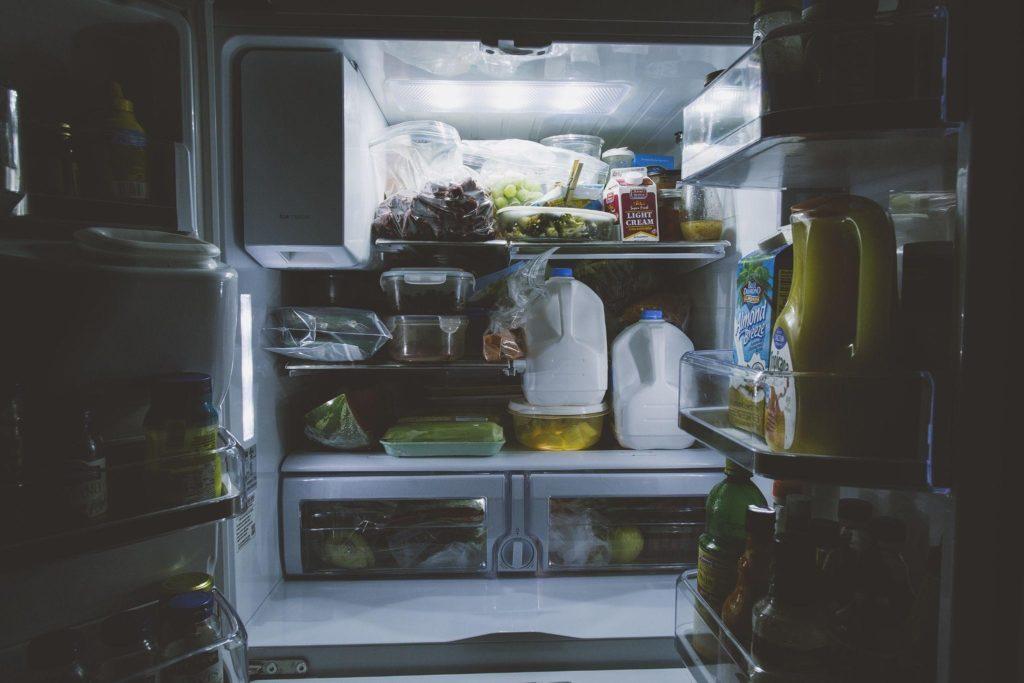
Food lasts longer when you put it in your freezer, and there is a reason for this. Freezing seems to “freeze time” and halt the degradation of your food. However, we don’t recommend leaving vegetables in there for too long as the nutritional value will decrease over time and you may see some signs of freezer burn.
Freezer burn happens if your food isn’t securely packaged. Make sure there is very little to no air in the packaging before freezing it to avoid freezer burn. When we think about freezing food, our first thought goes to raw and natural ingredients. However, it’s also possible to freeze cooked food as well for ease.
Before tossing cooked food in your freezer, we would suggest making sure it’s completely cooked and cooled. Otherwise, the heat will create steam within the packaging, which will affect the freshness of the food and speed up freezer burn.
Aside from being super effective, freezing is also very easy. Just toss the food (properly packaged) into your freezer and you’re good to go for a few weeks.
2. Dehydrating

Does anyone here like camping? Even if you don’t, non-perishable dried foods are known to last long. This is why they are popular among packing lists for camping trips.
Unfortunately, the drying process takes a while, not everyone knows how to do it, and it only applies to certain types of food. Herbs are known to be great natural ingredients to dry for seasoning, and some fruits as well.
To prolong the lifespan of dried food, we would suggest keeping it in the fridge. The average shelf life of dehydrated ingredients is about 6 months at room temperature.
What’s interesting about drying food is it is one of the oldest methods of preservation. We’re talking about centuries old dating back to the B.C. era. Other than being a natural process, it’s also environmentally friendly!
Sun-drying is the most natural way to do it without having to add too many natural preservatives. Just make sure there is little to no moisture, a high temperature, and lots of time.
3. Salting
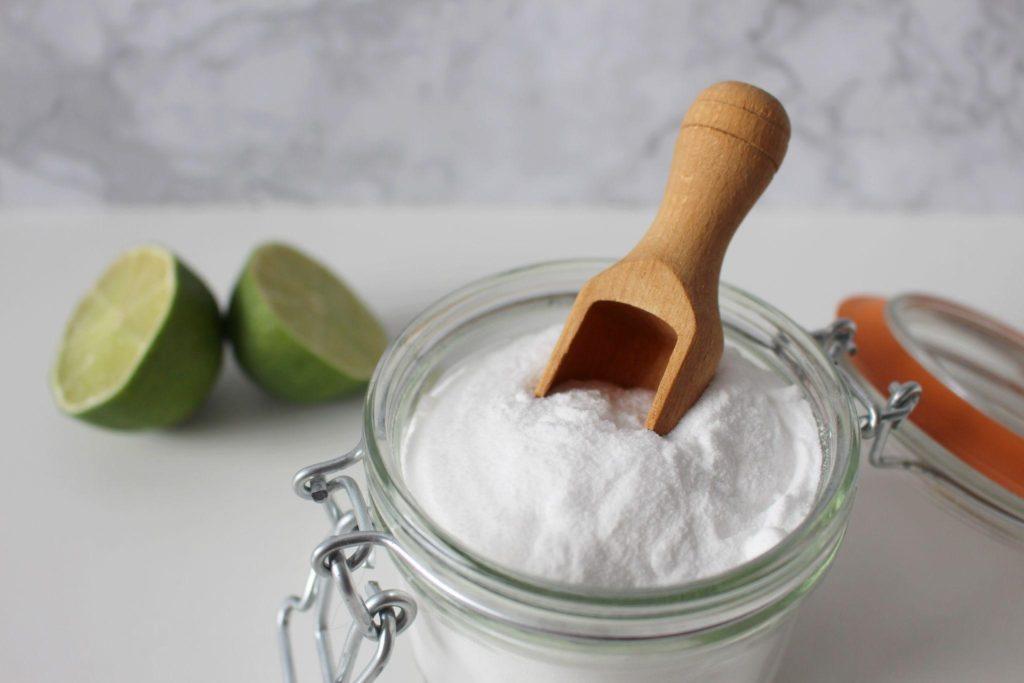
Salting is a version of dehydration, but instead of sunlight, we use salt, a part of a selection of natural preservatives. Salt is known to draw out the moisture in food and it was a method largely used before refrigeration was invented.
Thankfully, technology nowadays has advanced to the point where salting is obsolete and is mostly done for flavor and texture reasons rather than preservation (think cured meats).
We have also now learned that salting isn’t the best practice for hygienic and health reasons. Bacteria can actually thrive in a salty environment and so can mold. We suggest only attempting this if you have the expertise.
4. Pickling
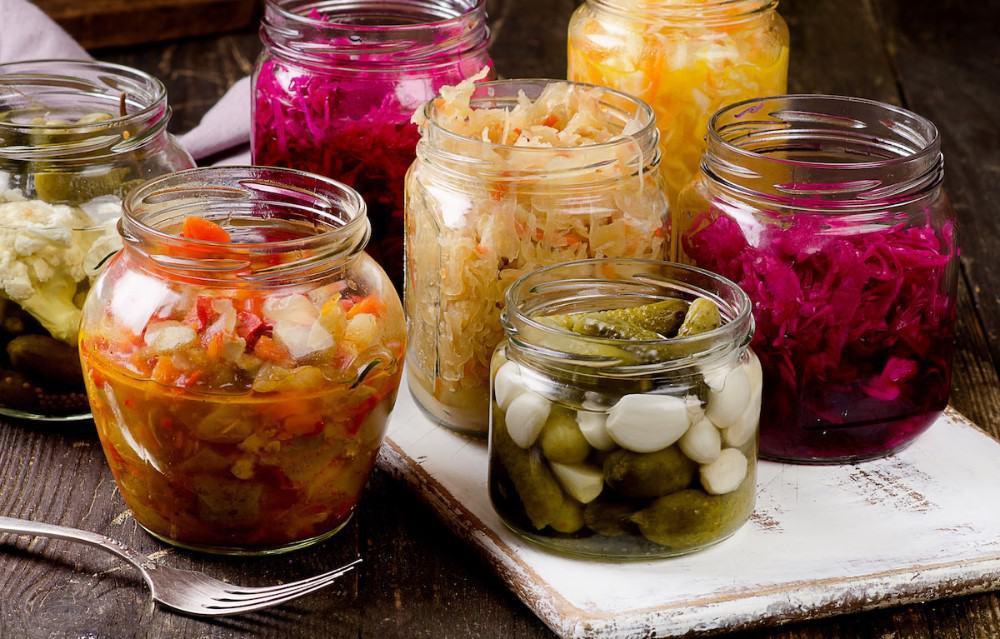
Pickling isn’t just for flavor; it’s also for the natural preservation of food. Like dehydration, pickling is also an old-school preservation technique that has stood the test of time. Again, there are certain ingredients that agree with the natural preservatives in this process more than others (we’re looking at you cabbage and sauerkraut).
Pickling is more than just dumping ingredients in liquid and sealing them in a jar. There are two main methods to picking – soaking in vinegar and soaking in salt brine. Some of the best natural preservatives are ones we can add to the food to aid healthy microbial growth.
As you can imagine, soaking ingredients in something as strong as vinegar could ruin the taste, so vinegar pickling is suited only for some things such as vegetables. Picking via vinegar is also referred to as quick pickling, which is a much simpler process than the alternative.
As for pickling in salt brine, also known as fermentation pickling, it is used to almost create something entirely new through fermentation. Fermentation encourages bacteria, which may go against the whole purpose of food preservation. However, it encourages “good” bacteria, which takes over instead of “bad” bacteria, which can make you sick. As you can imagine, the second method needs to be done right.
5. Canning
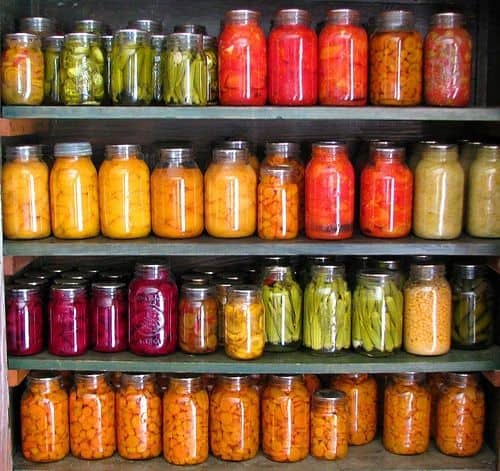
Earthquake and bomb shelters are most commonly linked with canned foods. Why? Because they last. This naturally leads us to think that canning is also a preservation technique that is healthier and just as effective as chemical preservatives. While artificial preservatives was more commonly included in the past to extend the shelf life, we have now evolved to more natural food additives.
When we think of canned food, we don’t really associate it with confectionary (candies and cakes), but it was actually invented by a French confectioner.
What is canning exactly? It’s the process of preserving food in cans. Quite straightforward, isn’t it? Except what separates canning a bit from the other food preservation methods is the food within is cooked. You might also recall that canned foods are another excellent meal option for camping trips.
They’re easy and do not involve cooking or cleanup. At most, they may require heating of the contents within the sauce or a quick boiling to remove any lingering bacteria.
Lick pickling, there are also two types of canning methods – boiling water bath and pressure canning.
Boiling water bath this type of canning is seen in jams, pickles and fruits. As for pressure canning, this method is ideal for veggies and to preserve meat.
6. Smoking

Perhaps one of our favorite methods of preservation is smoking. It adds an impeccable flavor that is delicious beyond description to the food and also prolongs its lifespan. Plus, it’s healthier than adding chemical preservatives.
This type of preservation smoking is different than the smoking you would do in a BBQ smoker, although you can still achieve similar results. It takes a lot of time to do (sometimes up to 24 hours) and can be done cold or hot. Yes, you can cold smoke meats, but it does take up much more time than other natural food preservatives.
Cold smoking is more for preservation, while hot smoking is more for flavor. Hot smoking requires high temperatures and flavors the meant, while cold smoking can take a very long time, anywhere up to a month, and is done slowly, long-term and aimed more at keeping rather than flavoring.
7. Garlic

Yes, you read that right. We are aware that garlic is used to season, and not many people may realize its preservation properties. While most of the food preservation techniques we mentioned above can extend the life of the food for weeks and even months, garlic is one you can rely on to do so for a few more days
It’s not a long-term method such as the rest, but not only can it keep the meats longer, but it can also eliminate harmful properties such as Salmonella and E.Coli. Garlic is known to keep the bacteria at bay, so while it may not miraculously rid all contaminated meats of unwanted bacteria, it can keep meats fresher, prevent the growth of these bacteria, and kill germs.
8. Sugar

While sugar is something we are taught to avoid in large amounts, there is no debate that sugar is one of the natural preservatives to keep in your pantry. Like salt, which we mentioned in the salting process, sugar is also used to draw out the moisture in food. Think of sugaring as the antithesis of salting, because the taste results are vastly different (although the process is much of the same).
Fruits can be preserved through the same method as salting, but instead of using salt, you would use sugar, to keep the natural sweetness.
9. Ascorbic Acid
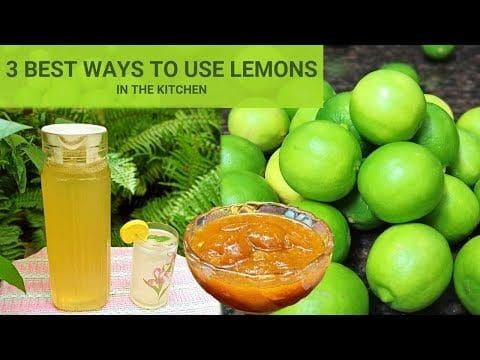
We bet you had to read that twice just to get it out. Ascorbic acid is just a fancy name for vitamin C, a natural preservative. Next time you see this term on the back of a food label on your food or your pet’s food, you will know what it is. It’s nothing to fear, we know some of these scientific terms can be scary, but ascorbic acid is a natural preservative that also boosts our immune system.
Like garlic and salt, ascorbic acid is something that is a natural preservative/food additives and something you can add to keep the food fresh for longer by slowing down the degradation. It isn’t a process to preserve food in itself, but more of a helpful ingredient. It’s worth it to note that ascorbic acid is different from citric acid, which is much more acidic.
10. Good Ol’ Alcohol
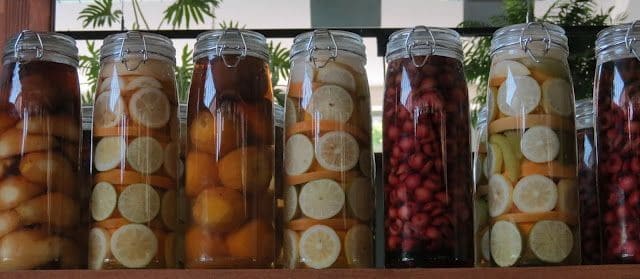
Alcohol is also something that can keep food for longer and is another natural preservative. Much like salt and sugar, alcohol is a dehydrator that draws moisture and water out. For those who do enjoy a glass of wine or a can of beer on the weekends, you’ll know that alcohol has the same effect on our bodies, which is why it’s important to stay hydrated.
If appropriate, you can immerse food in hard liquor, such as whisky, to keep it “fresh” for a very long time. Just make sure that the food is fully submerged for the alcohol to take full effect.
Which Technique is Best for Preserve Food?
The best technique really depends on what food or ingredient you’re looking at.
Freezing – Freezing your food is great if you don’t intend on keeping it indefinitely. You’re buying the ingredients to cook eventually and not store for a rainy day, such as Armageddon.
You can freeze almost anything, but keep in mind that it could detract from the food’s nutritional content and if it’s not stored properly you may get freezer burn.
Dehydrating – Dehydrating and drying out food in the sun is excellent for fruits, some veggies, herbs and even meats.
Salting – Salting and dehydrating can sometimes go hand-in-hand, and this is definitely the case for foods such as smoked meats and beef jerky. Salting is a way to use natural food preservatives that is most commonly seen in meats and we can see it with some vegetables.
Pickling – Pickling is one of those food preservation techniques with natural preservatives you can easily do at home. It’s because it works with most foods, such as meats, eggs, fruits, veggies, and even seafood!
Canning – Canning is another method to preserve food that can be applied to a variety of foods such as fruits, jams, pickles, meat, veggies, seafood, and more! It is perhaps one of the most diverse methods for natural preservatives and believe us when we say that nearly everything can be eaten out of a can.
Smoking – For smoking, our minds automatically go to meats, and rightly so. Smoking can be applied to preserve meat, poultry and even fish. These foods can work with cold or hot smoking, whichever you prefer.
Adding Garlic – There are no rules when it comes to garlic. If the flavors mesh well, then heap on the garlic! In our opinion, garlic is an excellent complementary ingredient that can take a dish to the next level, and it can for preserving ingredients as well.
Sugar – Food preservation with sugar adopts the same concept as salting and dehydration, but we would recommend this method more for foods that have original sweetness such as fruits.
Adding Ascorbic Acid – Ascorbic acid is another ingredient you can add to a wide range of foods for preservation. You can find it in many of the foods we eat and in cured meats, bread, and fruits to extend the shelf life.
Alcohol – While we’re pretty sure that alcohol can be used to preserve certain meats after hefty experimentation, we’re just not too sure about it just yet. However, we know that hard liquor is excellent for preserving fruits and vegetables.
The Best Place to Store Food for Preservation
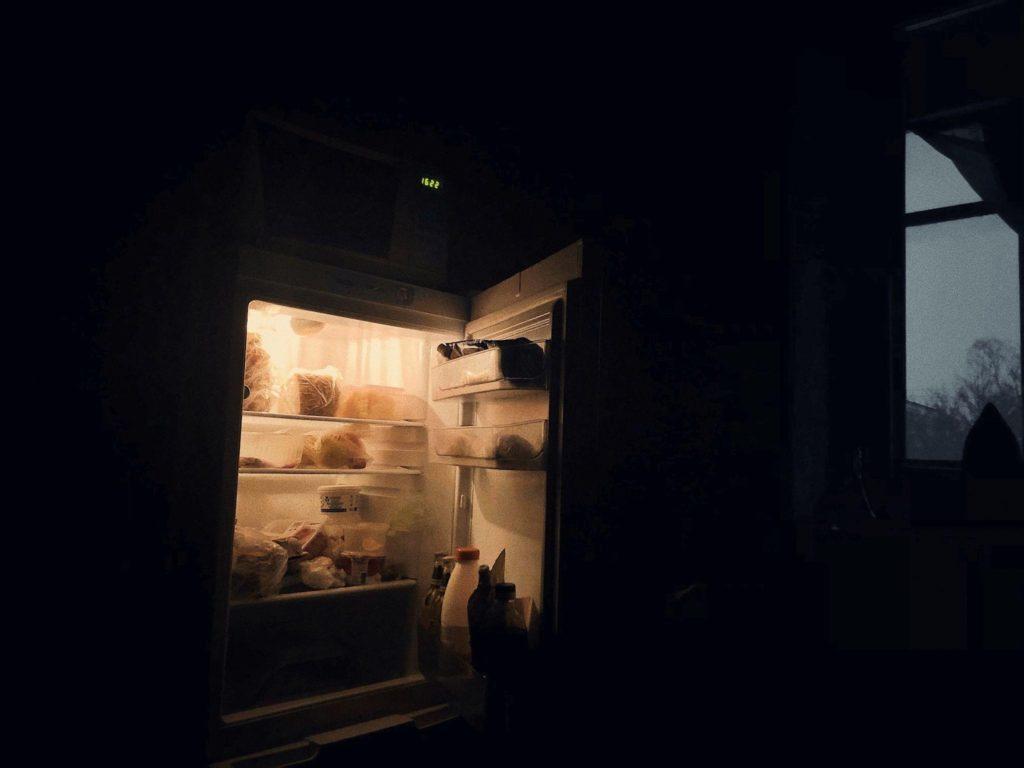
Aside from your refrigerator and freezer, the best places to store food include:
· Pantry
· Root cellar
· Cool space in the basement
· A crawl space
The internal climate of these places will help aid the natural food preservatives in the process. Only certain types of food can thrive in these cool, dark and dry places such as apples, onions, and potatoes. We still have to rely on modern technology to keep items such as meats, dairy and seafood. Food safety is important, so make sure to store everything correctly.
Many of the food preservation techniques we mentioned above should be carried out in the spaces we mentioned, such as canning, salting, sugaring, and pickling. Some methods require a freezer while others are better done outdoors such as smoking and sun-drying.
